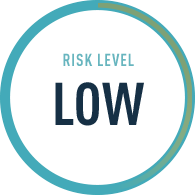Soybean Aphid
Soybean aphid populations continue to remain low across virtually the entire upper Midwest and Great Lakes region, but there has been an increase in both coverage and populations in several areas due to recent favorable weather conditions for soybean aphid regeneration. Given low populations present, the soybean aphid risk level throughout the next week is kept in the low category especially with a day or so of some heat early this week which may keep many aphids within the canopy. Once a cold front passes by mid-week, however, there is the chance that some migration may occur especially from southeast North Dakota and eastern South Dakota as well as central and western Minnesota southward as far as northeast Nebraska, northern Iowa, and into Wisconsin. Winged soybean aphids are becoming more prevalent especially in western portions of the upper Midwest. A return to a potentially more favorable weather pattern for continued soybean aphid population increases is predicted by late week and into next weekend across the upper Midwest. With many soybean fields in full bloom now and at critical growth stages where economic impacts are possible, growers are urged to actively scout fields and take note of population dynamics in between scouting periods. If you see a rapid increase in aphid populations, scout more often and be prepared to make decisions whether to treat or not based on provided economic thresholds, crop stage, and what is going on in the field and not necessarily what the regional report is saying.




